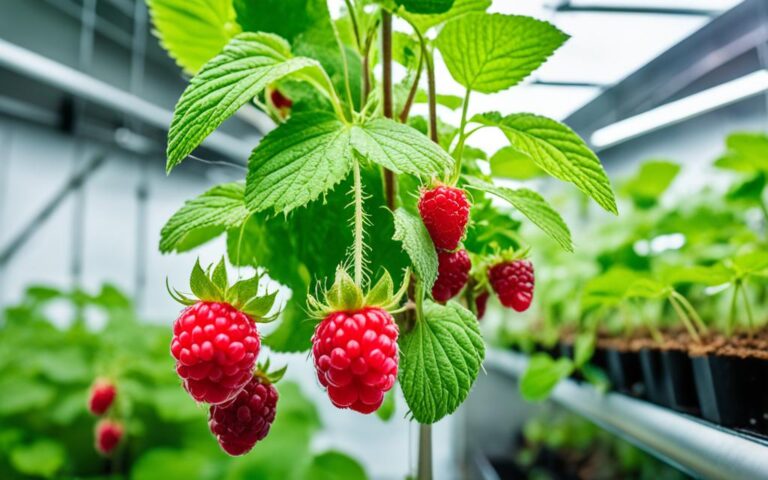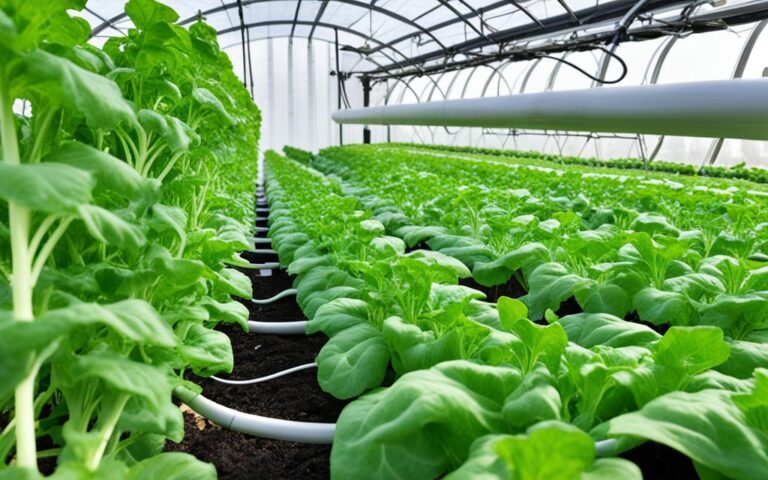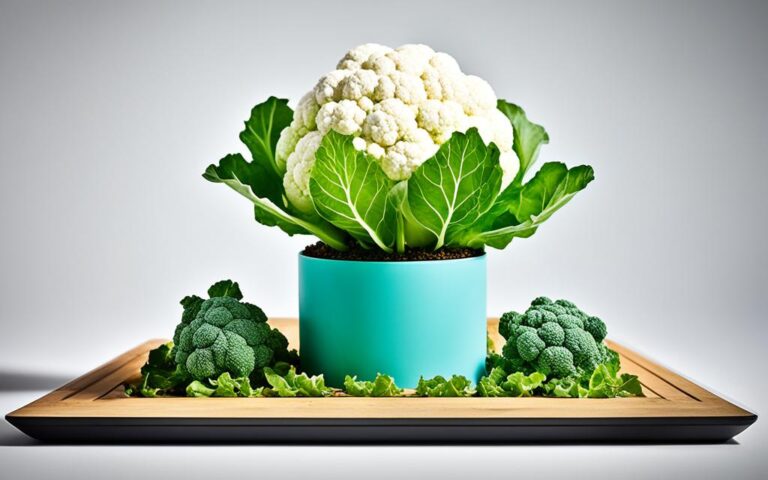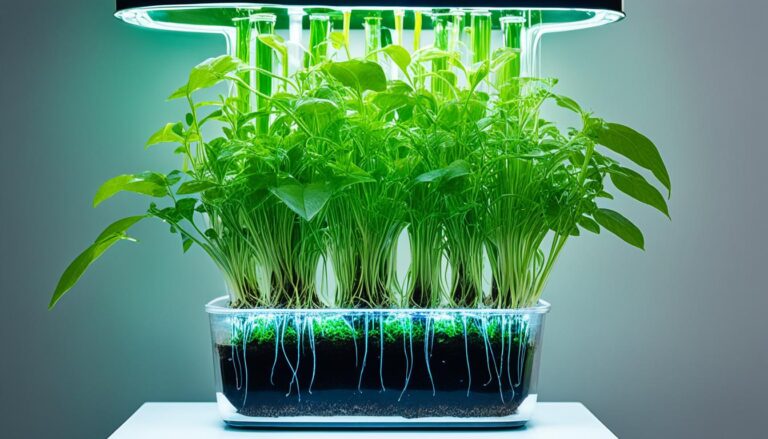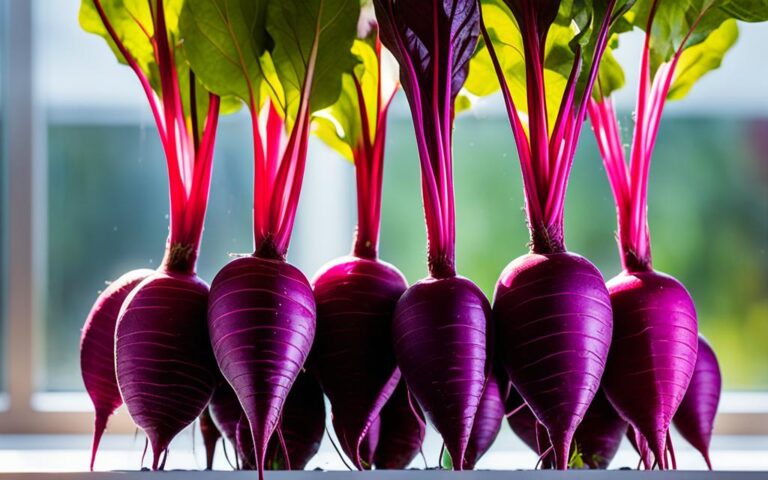8 Best hydroponics plants to grow in spring
Hydroponics: The Soil-less Wonder of Modern Gardening
Welcome to the future of gardening, where dirt is so passé, and plants thrive on air, water, and a whole lot of science. Hydroponics, the art of growing plants without soil, is not just a trend; it’s a revolution with roots deep in innovation and sustainability.
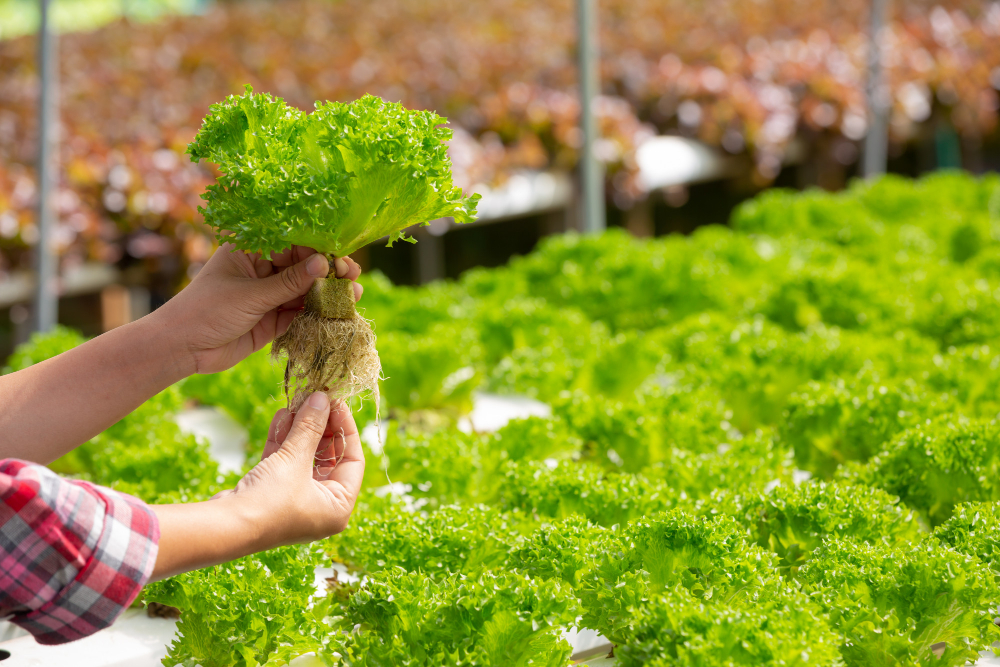
Why Hydroponics? Because Dirt is Overrated
In a world where space is a luxury and efficiency is the name of the game, hydroponics steps in as the cool, clean, and collected method of cultivation. It’s like giving your plants a first-class ticket to Nutrientville, minus the jet lag. With hydroponics, plants get exactly what they need, when they need it, without the guesswork. No more moody soil conditions to deal with – just pure, unadulterated plant pampering.
Table of Contents
Spring into Action: Hydroponics and the Season of Growth
Spring is nature’s way of saying, ‘Let’s party,’ and what better way to join the festivities than by starting a hydroponic garden? As the frost thaws and the days grow longer, your hydroponic plants will be basking in the glow of growth. It’s the season when life renews, and your garden should be no exception.
The Perks of Being a Hydroponic Gardener in Spring
- Speedy Growth: Plants in hydroponic systems don’t just grow; they zoom. Spring’s mild temperatures and ample light make it the perfect time to watch your greens go from zero to hero in no time.
- Water Wise: Hydroponics is like a camel in the plant world – it makes every drop of water count. In spring, when water conservation is key, hydroponics is the poster child for sustainability.
- Pest-Free Party: With hydroponics, pests are so last season. Spring is about new beginnings, not battling bugs. So, leave the pesticides in the past and enjoy a clean, green growing experience.
- Space Savers: Whether you’re in a New York apartment or a suburban bungalow, space is precious. Hydroponics lets you maximize your green thumbprint, turning any corner into a potential garden oasis.
- Consistent Yields: Mother Nature can be fickle, but hydroponics is all about stability. Spring showers and flowers are great, but consistent yields are even better. With hydroponics, you’re the weatherman, and the forecast is always sunny for your plants.
Embarking on a hydroponic journey requires a thoughtful selection of plants, especially when considering the vibrant season of spring. Here’s an informative piece, drawing from first-hand experience, on choosing the right plants for your hydroponic system during this season of renewal.
Selecting the Right Plants for Spring
As a hydroponic enthusiast, I’ve learned that the success of your garden hinges on the careful selection of plants. Spring, with its promise of new beginnings, offers the perfect backdrop for hydroponic cultivation. However, not all plants are created equal when it comes to soil-less growing methods.
Criteria for Choosing Plants for Hydroponic Systems
When selecting plants for hydroponic systems, especially in the spring, it’s crucial to consider the specific growth requirements of each plant and how they align with the seasonal conditions. Here’s a more detailed look at the criteria with spring-specific information and numeric data:
Criteria for Choosing Plants for Hydroponic Systems in Spring
- Growth Requirements: Each plant has unique needs in terms of temperature, humidity, light intensity, and nutrient needs. For instance, lettuce prefers temperatures between 60-70°F and can have a yield of around 3.9 ounces per plant in optimal conditions.
- Space Availability: The size and growth habit of the plants should align with the available space in your hydroponic system. Compact plants like herbs are ideal for smaller systems.
- Nutrient Requirements: Plants with similar nutrient needs can be grown together to simplify the management of the nutrient solution. For example, leafy greens generally thrive in a pH range of 5.5 to 6.5.
- Growth Cycle: Spring is a time of rapid growth, and plants with shorter growth cycles can take full advantage of this season. Radishes, for example, can be harvested in as little as 25 days.
- Disease and Pest Resistance: Spring can bring about a host of pests and diseases. Plants with natural resistance or those less prone to common spring pests should be prioritized.
- Personal Preferences: Ultimately, the choice of plants should also reflect the grower’s preferences and the demand for certain crops.
In my experience, leafy greens like lettuce and spinach are excellent choices for beginners due to their rapid growth and minimal space requirements. Herbs such as basil and mint are also hydroponic-friendly, offering continuous harvests and aromatic rewards.
Importance of Considering the Spring Climate
Spring’s climate plays a pivotal role in the selection process. The moderate temperatures (range from 50-75°F) and increased daylight hours provide an ideal setting for many hydroponic plants. However, it’s crucial to consider the specific needs of each plant in relation to the spring climate of your region.
For instance, while lettuce thrives in the cool, mild conditions of early spring, warm-season crops like tomatoes and peppers prefer the warmer temperatures that follow. Understanding these nuances can make all the difference in achieving a bountiful harvest.
Spring humidity levels can also fluctuate, affecting transpiration and nutrient uptake. Maintaining an optimal range of 40-60% is beneficial for most hydroponic plants.
Climate control becomes a critical aspect of successful hydroponic systems. The relationship between temperature, humidity, and plant growth is delicate, and spring’s fluctuating conditions necessitate a keen eye on environmental management within your hydroponic setup.
Below table provides a guide to choose the best hydroponics plants for spring based on the county and weather conditions.
| State | Onset of Spring | Weather Conditions | Suitable Hydroponic Plants |
|---|---|---|---|
| Florida | Early March | Warm and humid2 | Lettuce, Strawberries, Basil |
| Texas | Mid-March | Warm, possible late cold snaps2 | Peppers, Tomatoes, Cucumbers |
| California | Early March | Mild, dry2 | Spinach, Kale, Mint |
| New York | Late March | Cool, wet2 | Spinach, Kale, Chard |
| Illinois | Early April | Variable, occasional late frosts2 | Lettuce, Herbs, Spinach |
| Washington | Mid-March | Cool, rainy2 | Greens, Herbs, Peas |
| Colorado | Late March | Cool, possible snow2 | Cool-season Greens, Herbs, Radishes |
Top Plants for Spring Hydroponics
As the frost of winter melts away, spring emerges as a time of renewal and growth. For hydroponic enthusiasts, it signals the start of a season ripe for cultivating a variety of plants. Among the plethora of options, certain plants stand out as particularly well-suited for spring hydroponics due to their growth cycles, flavor profiles, and nutritional benefits. Let’s delve into the world of hydroponics and explore why lettuce, herbs like basil, mint, and parsley, spinach, and strawberries are the top contenders for your spring garden.
Lettuce: The Speedy Green
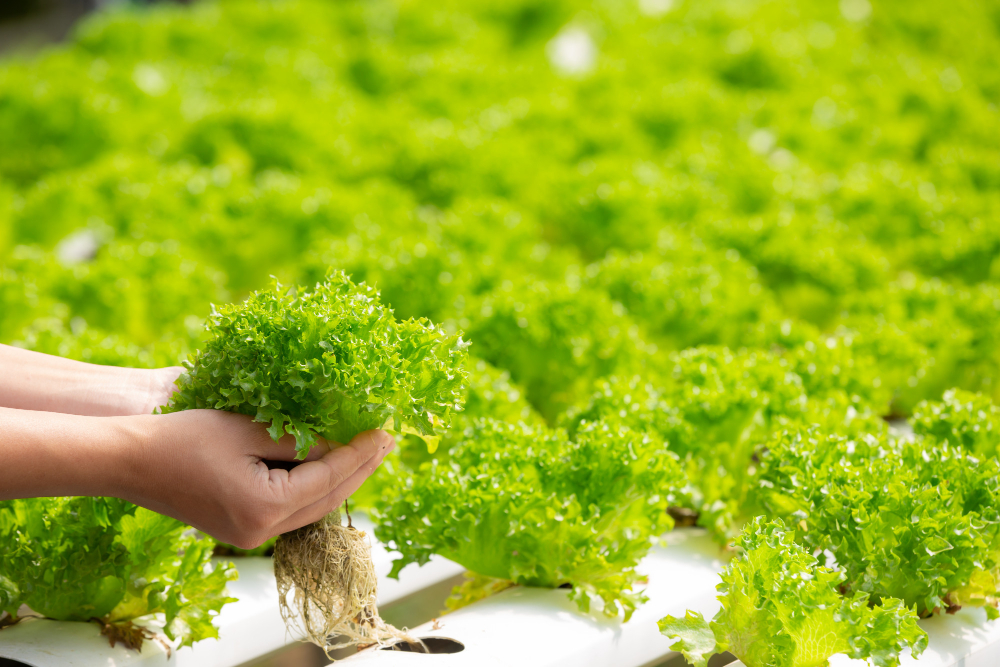
| Parameter | Requirement |
|---|---|
| Light | 12-16 hours per day |
| pH | 5.5-6.5 |
| EC (Electrical Conductivity) | 1.4-1.8 mS/cm |
| Temperature | 60-70°F (15-21°C) |
| Humidity | 40-60% |
| Nutrients | Balanced NPK, higher in nitrogen |
Lettuce is the quintessential hydroponic plant, known for its rapid growth cycle and ease of cultivation. It’s a cool-season crop that doesn’t mind the chill still lingering in the early spring air. With a growth cycle that can be as short as 30 days from seed to harvest, lettuce allows growers to enjoy multiple harvests within a single season. The crisp, fresh leaves are not only a staple in salads but also a source of vitamins A and K, along with essential minerals.
In a hydroponic system, lettuce thrives under a consistent light source, which can be adjusted to extend daylight hours in spring. The plant prefers a pH range of 5.5 to 6.5 and a nutrient solution rich in nitrogen to support its leafy growth. Temperature-wise, lettuce is comfortable between 60-70°F (15-21°C), making it a perfect match for the moderate climate of spring.
Herbs: The Aromatic Trio
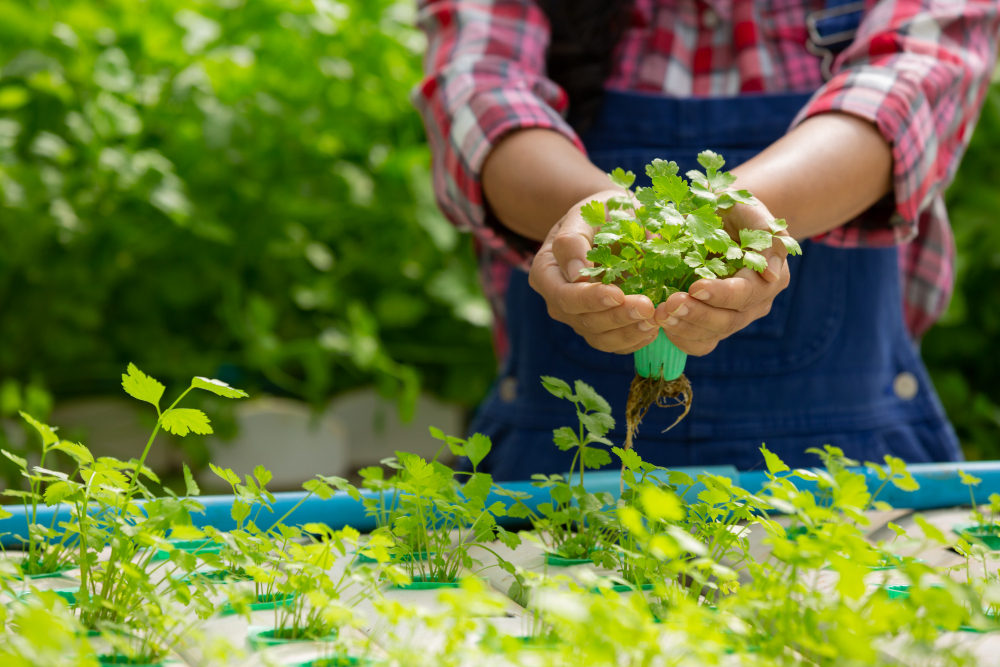
| Parameter | Requirement |
|---|---|
| Light | Minimum 14 hours per day |
| pH | 5.8-6.2 |
| EC | 1.0-1.4 mS/cm |
| Temperature | 18-21°C (65-70°F) |
| Nutrients | Balanced NPK |
Basil, mint, and parsley are the aromatic trio that brings a burst of flavor to any dish. These herbs are ideal for hydroponic systems due to their compact size and the continuous harvest they offer. They’re not just culinary delights; they’re also packed with antioxidants and have various health benefits.
Basil is a warm-weather herb that starts to flourish as the spring temperatures rise. It requires 10-14 hours of light and a slightly warmer temperature range of 65-75°F (18-24°C). Mint, on the other hand, is a hardy herb that can tolerate a wider temperature range, making it forgiving for new hydroponic gardeners. Parsley, with its biennial growth habit, provides a steady supply of leaves in the first year and can be harvested throughout the spring season.
Spinach: The Cool-Weather Champion
| Parameter | Requirement |
|---|---|
| Light | 10-14 hours per day |
| pH | 5.5-6.5 |
| EC | 1.8-2.3 |
| Temperature | 10-27°C (50-80°F) |
| Nutrients | Balanced, similar to lettuce |
Spinach is a powerhouse of nutrients, known for its high levels of iron, calcium, and vitamins. It’s a champion of cool weather, preferring the lower end of spring temperatures, which makes it an excellent choice for early spring planting. Spinach’s growth cycle is short, similar to lettuce, allowing for quick harvests and the ability to replant for successive yields.
In hydroponic systems, spinach benefits from 10-14 hours of light per day and a consistent temperature range of 60-70°F (15-21°C). It’s a plant that’s sensitive to pH fluctuations, so maintaining a pH of 5.5 to 6.5 is crucial for optimal growth.
Strawberries: The Sweet Spot

| Parameter | Requirement |
|---|---|
| Light | 6-14 hours per day |
| pH | 5.5-6.2 |
| EC | About 1.0 |
| Temperature | 18-26.6°C (65-80°F) |
| Nutrients | Balanced, low salts during fruiting |
Strawberries are a sweet treat that’s surprisingly well-adapted to hydroponic cultivation. They bring a splash of color and a burst of flavor to the spring garden. Strawberries require more attention than leafy greens or herbs, but the reward of fresh, juicy berries makes it worthwhile.
For successful growth, strawberries need 8-12 hours of light and prefer a cooler temperature range of 60-80°F (15-27°C), which aligns with the mildness of spring. They also require a slightly acidic pH of 5.5 to 6.2 and a nutrient solution that’s higher in potassium to support fruit development.
Tomatoes: The Versatile Vine

| Parameter | Requirement |
|---|---|
| Light | 8-10 hours per day |
| pH | 5.5-6.5 |
| EC | 2.0-5.0 mS/cm |
| Temperature | 18-25°C (64-77°F) |
| Nutrients | Specific for tomatoes, lower nitrogen during fruiting |
Tomatoes are a favorite in the hydroponic world, not just for their versatility in the kitchen but also for their adaptability to various hydroponic systems. They are particularly well-suited for spring hydroponics due to their preference for warmer temperatures as the season progresses. With a slightly longer growth cycle than lettuce or herbs, tomatoes offer a continuous harvest throughout the season.
In a hydroponic setup, tomatoes require 8-10 hours of light per day and thrive in temperatures between 18-25°C (64-77°F). They prefer a pH range of 5.5-6.5 and an electrical conductivity (EC) of 2.0-5.0 mS/cm, indicating a higher nutrient concentration, especially during the fruiting stage. A nutrient solution specific for tomatoes, with a lower nitrogen content during fruiting, is ideal for promoting robust fruit development.
Peppers: The Colorful Capsicum
| Parameter | Requirement |
|---|---|
| Light | At least 12 hours |
| pH | 6.0-7.0 |
| EC | 2.0-3.5 mS/cm |
| Temperature | 18-25°C (64-77°F) |
| Nutrients | Higher potassium during fruiting |
Peppers, both sweet and spicy, are a vibrant addition to any hydroponic garden. They bring a spectrum of colors and flavors to the table and are known for their relatively easy cultivation in hydroponic systems. Spring’s stable temperatures provide an excellent environment for peppers, which can be started early in the season and harvested throughout summer.
Hydroponic peppers flourish under at least 12 hours of light and require a pH of 6.0-7.0. The EC level for peppers should be maintained around 2.0-3.5 mS/cm, with higher levels for hot or spicy varieties to encourage capsaicin production, which contributes to their heat. Peppers grow best in temperatures similar to tomatoes, around 18-25°C (64-77°F), and benefit from a balanced nutrient solution with higher potassium during the fruiting phase.
Conclusion
The transition from winter to spring is a period filled with potential for hydroponic gardeners. Lettuce, herbs, spinach, and strawberries are not just plants; they represent a fresh start, an opportunity to grow and harvest your own food, and a chance to engage with the cycle of life that spring embodies. These plants are more than just top choices for your hydroponic system; they’re a testament to the harmony between technology and nature, yielding produce that’s as nutritious as it is delicious. As you embark on your spring hydroponic journey, let these plants guide you toward a season of abundance and vitality.
As spring approaches, the anticipation of a new growing season sets in. For hydroponic gardeners, this is the perfect time to set up their systems to ensure a bountiful harvest. The key to success lies in choosing the right hydroponic system and preparing it to support the best spring plants. Let’s delve into the essentials of setting up your hydroponic system for spring.
Choosing the Right Hydroponic System
The first step is selecting a hydroponic system that suits your needs, space, and the types of plants you wish to grow. Here are some popular systems:
- Nutrient Film Technique (NFT): Ideal for leafy greens and herbs, NFT systems circulate a thin film of nutrient solution over the roots, providing constant access to nutrients and oxygen. It’s a space-efficient choice for those with limited room.
- Deep Water Culture (DWC): In DWC systems, plants are suspended in a nutrient-rich solution, allowing for rapid growth and high yields. This system is great for larger plants like tomatoes and peppers.
- Aeroponics: This advanced system mists the roots with a nutrient solution, offering excellent oxygenation and nutrient absorption. Aeroponics is suitable for a wide range of plants and is known for its water efficiency.
- Ebb and Flow: This system periodically floods the plant roots with nutrients before draining back. It’s versatile and can accommodate various plant sizes, making it a good all-rounder for spring planting.
- Drip Systems: A drip system slowly delivers nutrients to each plant, conserving water and nutrients. It’s adaptable to both small and large plants and is easy to customize.
When choosing a system, consider the following factors:
- Space: How much room do you have? Vertical systems like NFT can save space, while DWC might require more room.
- Plant Type: What do you want to grow? Leafy greens do well in NFT, while fruiting plants may prefer DWC or drip systems.
- Experience Level: Are you a beginner or an experienced grower? Systems like NFT and aeroponics require more attention, while DWC and ebb and flow are more forgiving.
- Budget: How much are you willing to invest? Some systems are more cost-effective to set up and maintain than others.
Preparing Your System for the Best Spring Plants
Once you’ve chosen your system, it’s time to prepare it for spring planting. Here’s how to get started:
- Clean Your System: Start with a clean slate by thoroughly sanitizing your system to prevent any disease carryover from previous crops.
- Test and Adjust: Check all pumps, timers, and lights to ensure they’re functioning correctly. Adjust your lighting to accommodate the longer daylight hours of spring.
- Choose Your Growing Medium: Select a medium that complements your system and plants. For example, rockwool cubes are great for seed starting in NFT and DWC systems.
- Prepare Nutrient Solutions: Mix your nutrients according to the needs of your spring plants. Ensure the pH and electrical conductivity (EC) levels are appropriate for the plants you’re growing.
- Plant Selection: Choose plants that thrive in spring’s mild temperatures. Lettuce, herbs, spinach, strawberries, tomatoes, and peppers are all excellent choices for spring hydroponics.
- Seed Starting: Start your seeds in a suitable medium and environment. Once they’ve germinated, transplant them into your hydroponic system.
- Monitor and Adjust: Keep a close eye on your system, especially in the early stages. Monitor plant growth, nutrient levels, pH, and EC, and make adjustments as needed.
- Pest and Disease Management: Implement preventive measures to protect your plants from pests and diseases common in spring.
By carefully selecting and preparing your hydroponic system, you can take full advantage of spring’s growing conditions. Whether you’re growing leafy greens, herbs, or fruiting plants, a well-set-up hydroponic system can provide you with a plentiful harvest throughout the season and beyond.
In the realm of hydroponics, spring heralds a season of growth and renewal. As we delve into the intricacies of plant growth requirements and the nuances of harvesting, we’ll also touch upon the sustainable practices that make hydroponics a beacon of modern agriculture.
Plant Growth Requirements
Understanding the trifecta of light, temperature, and nutrients is crucial for hydroponic success. Light, the energy source for photosynthesis, varies in requirement from plant to plant but generally ranges from 8-10 hours per day. Temperature control is equally vital, with most spring plants thriving in a consistent range of 60-80°F. Nutrients, delivered in a water-soluble form, must be carefully balanced to meet the specific needs of each plant, ensuring robust growth and yield.
Adjusting Your Setup for Optimal Spring Growth
Spring’s longer days and warmer temperatures necessitate adjustments to your hydroponic setup. Increasing light exposure and fine-tuning the nutrient mix to cater to the vigorous growth of spring plants are essential steps. Monitoring the pH and electrical conductivity (EC) levels will ensure that your plants absorb nutrients effectively.
Harvesting Your Hydroponic Plants
The timing and method of harvesting vary widely among plant types. Leafy greens may be ready in as little as 25 days, while fruiting plants like tomatoes take longer. Harvesting should be done with care to avoid damage, and for some plants, it can be done in stages to allow for continuous growth.
Post-harvest Care and Storage
After harvest, immediate cooling is often necessary to preserve quality and extend shelf life4. Proper cleaning, drying, and storage in appropriate conditions are critical to maintaining the freshness of your hydroponic produce.
Conclusion
As we conclude, let’s recap the best plants for spring hydroponics: lettuce, spinach, herbs, and strawberries are among the favorites due to their suitability and ease of growth in hydroponic systems. Encouraging sustainable gardening practices, hydroponics stands out for its efficient use of resources, reduced need for pesticides, and its contribution to reducing water waste and pollution. By embracing these practices, hydroponic gardeners can enjoy bountiful harvests while contributing to a healthier planet.
FAQs
Q: What are the best plants to grow in a hydroponic system during spring?
The best plants for spring hydroponics include leafy greens like lettuce and spinach, herbs such as basil, mint, and parsley, and fruiting plants like strawberries, tomatoes, and peppers. These plants are well-suited for the mild temperatures and longer daylight hours of spring.
Q: Can I grow root vegetables hydroponically in spring?
While it’s possible to grow root vegetables like carrots and potatoes hydroponically, they are generally more challenging and less practical than other types of plants. Leafy greens and nightshade plants like tomatoes and peppers are more popular choices for hydroponic systems.
Q: What hydroponic system is best for home gardeners in spring?
Home gardeners often find success with systems like Nutrient Film Technique (NFT), Deep Water Culture (DWC), and ebb and flow systems. These systems can be cost-effective and suitable for a variety of plants that thrive in spring conditions.
Q: How do I adjust my hydroponic system for spring plant growth?
Adjust your system by increasing light exposure to mimic longer daylight hours, fine-tuning the nutrient mix for vigorous spring growth, and ensuring the pH and EC levels are appropriate for the plants you’re growing.
Q: When should I harvest my hydroponic plants in spring?
Harvest times vary depending on the plant. Leafy greens may be ready in as little as 25 days, while fruiting plants like tomatoes take longer. Harvest when the plants have reached the desired size and maturity.
Q: What post-harvest care is required for hydroponic plants grown in spring?
After harvesting, it’s important to cool the plants immediately to preserve freshness. Clean, dry, and store your produce in conditions that maintain quality and extend shelf life.
Are there any sustainable practices I should follow in my spring hydroponic garden?
Yes, sustainable practices include using water efficiently, recycling nutrient solutions when possible, and controlling pests and diseases through natural methods. These practices help reduce waste and the environmental impact of your hydroponic garden.

